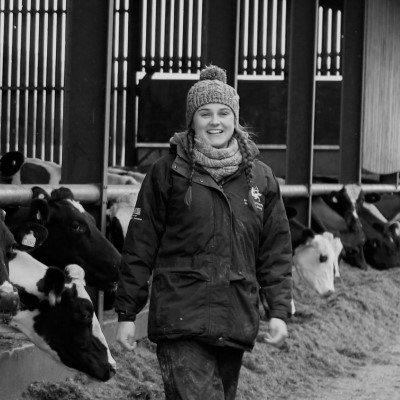CIEL | Blog: Chicken + Carbon + Consumer = A Challenge
Dr Fiona Short

The National Food Strategy (Part 2) highlighted poultry meat as a low carbon protein, but its footprint varies depending on the production system. In the report it stated that birds reared on intensive indoor farms have a much lower carbon footprint than those in free range systems. This is a result of feed efficiency and higher biosecurity reducing disease in flocks.
What then does the future hold for our slower growing birds, which have access to the outdoors and are fed for longer?
Much has been made of higher-end retailers and restaurants pledging to move to slower growing birds reared to higher welfare standards, accompanied by the claim that the meat has a better flavour.
If we want to continue the move to slower growing birds, we need to look at ways of mitigating the increase in the carbon footprint, such as precision feeding and lower carbon footprint feed ingredients, for example alternative proteins to reduce reliance on imported soya.
Alternative proteins
What are the options for alternative proteins as poultry feed? Peas, beans, lupins, algae, microbial protein are all in the mix, but soya is a difficult protein to replace. Insect protein is out there too, but will we have enough suitable feed sources to be able to produce them in sufficient quantities, and will it be accepted by consumers? Recent legislation changes have also enabled the return of using animal protein. Will this offer a practical and accepted solution too?
Could less be more?
There is also the option of growing fewer birds, thus reducing the demand for feed and land, and emissions produced. Some consumers could recognise such birds to be of superior quality, having perceived them to have been reared to higher welfare standards. Such products would have to demand a higher price, potentially putting them out of reach for a significant number of consumers.
Environment, efficiency and shopper expectations can overlap, but there can also be some tensions and trade-offs to resolve.
Moving to slower growing chickens does have some advantages, but carbon costs will increase if nothing else changes. We need to look at the carbon cost of production and focus on areas where they can be reduced or live with the higher cost of poultry meat.
Many of the issues raised in this piece are being actively examined by CIEL and the wider industry. Identifying solutions forms a critical part of farming’s transition to Net Zero.
To chat to us more about our work in this area, and the research capability available across the CIEL Network that can support related studies, please drop us a line.


Dr Fiona Short, Innovation Manager – Nutrition
Working within the innovation team, Fiona provides scientific insight and translation of technical research to support industry members and help ensure its impact is realised across the supply chain.
Fiona has spent the majority of her career working in the animal health and nutrition industry, specialising in monogastrics, with over 17 years in research and a further six in industry.
Email: [email protected] | Phone: 01904 567716







